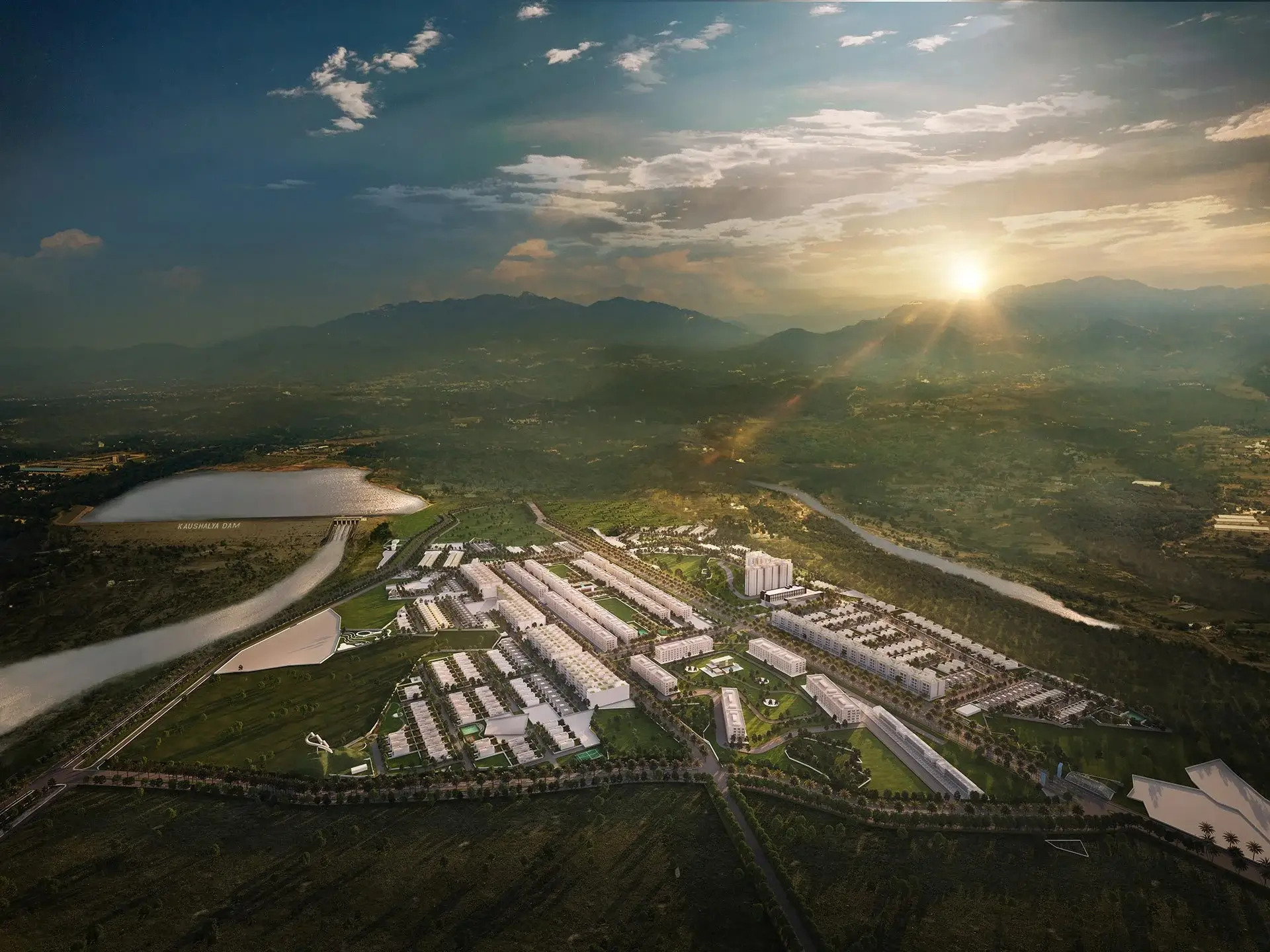
Blog
We keep you up to date on the most recent real estate news and events.
Morni Hills and Beyond: Exploring Nature Around Your Future Home
For many urban dwellers, the dream is not merely an address—it’s the lifestyle that surrounds it. Imagine waking each morning to the scent of pine, the call of distant birds, and a soothing cool breeze drifting in through open windows. In the rapidly transforming North Indian real estate landscape, nature’s proximity is no longer a luxury; it’s an essential facet of contemporary living. Enter Morni Hills: an emerald crown atop Haryana, and a pristine sanctuary promising a unique marriage of tranquillity, adventure, and vibrant community life.
Introduction: Where the Mountains Whisper
Long before trendsetters coined the phrase "wellness living," Morni Hills had already perfected the art. Just 45km from Chandigarh and about 35km from Panchkula city, Morni is considered Haryana’s only hill station by tourism boards—a haven where the Shivalik foothills spill into lush forests, enigmatic lakes, and history-soaked trails1. This region is swiftly becoming synonymous with both adventure tourism and premium residential expansions, making it a top choice for those wishing to balance nature, investment, and everyday comfort23.
Morni Hills: Geography, Biodiversity, and the Soul of Haryana
A Tapestry of Land and Legend
Morni’s mountainous spine stretches up to 1,220 metres (4,000ft) above sea level, bestowing sweeping Himalayan views on clear mornings1. Historically named after a local queen, Morni is as much a tapestry of folklore as it is a demonstration of ecological abundance4. The hills are offshoots of the Shivalik range, a geologically young, biodiverse tract known for its unique climate and flora.
Flora and Fauna
Pine, oak, neem, pipal, jamun, amaltas, and jacaranda trees carpet the hillsides, presenting a constantly evolving palette of greens and blossoms across the seasons. These diverse habitats sustain an impressive variety of wildlife, ranging from quail and sand grouse to jackals, hyenas and the occasional jungle cat25. According to research by the Indian Academy of Sciences, Studies suggest that mixed forests in the Shivaliks support high biodiversity and dense vegetation and up to 11,050 plants per hectare in shrub layers—the kind of numbers that guarantee both ecological richness and consistent rejuvenation67.
Heritage whispers through every grove. The area’s ancient temples, including the Thakur Dwara Temple dating back to the 10th century, and fossil findings from the early 19th century, lend Morni an aura that spans eras, cultures, and generations48.
The Lakes, Trails, and Sacred Spaces
Mystical Waters: Tikkar Tal and Twin Lakes
Morni’s two famed lakes—Tikkar Tals—are natural marvels, separated by a low hill yet mysteriously locked in synchronised water levels. Locals consider the lakes sacred and celebrations often centre around their quiet banks14. For home-seekers, such sites translate to an abiding sense of community and continual exposure to local tradition.
Adventure Beckons: Trekking, Birdwatching, and More
Morni’s rolling valleys and forested ridges invite explorers year-round. Easy access to:
- Trekking: From soft, family-friendly walks to challenging treks that lead to ancient forts and secret waterfalls9.
- Morni Fort: An ancient structure perched high for rewarding views and intimate encounters with history910.
- Birdwatching: The region is a refuge for both resident and migratory birds—perfect for seasoned ornithologists and casual enthusiasts alike5.
For families, the nearby Adventure Park and curated jungle trails provide safe, educational, and exhilarating experiences, making this area ideal for multigenerational living911.
Attractions Beyond Morni: Nature’s Bounty at Your Doorstep
Living here is not limited to just the hills. An array of exceptional sites beckon within a short drive:
- Pinjore Gardens: A 17th-century Mughal masterpiece, acclaimed for its manicured lawns, fountains, and seven-level terrace design—majestic and perfect for leisure picnics9.
- Garden of Silence: A tranquil retreat ideal for yoga or meditation, dominated by the serene statue of Lord Buddha, supporting holistic wellness9.
- Cactus Garden: Asia’s largest, featuring over 3,500 species of cacti and succulents, it’s a botanical wonder for the curious of all ages9.
- Kaushalya Dam: Scenic reservoirs and boating destinations foster both biodiversity and family-friendly outings3.
Climate, Air Quality, and Wellness
Morni Hills' elevation ensures year-round pleasant weather—cool summers, crisp winters, and rejuvenating monsoon spells. A significant draw for homebuyers is the area’s naturally high air quality. The dense forestation filters pollutants, reduces temperature extremes, and keeps the environment brimming with negative ions—scientifically associated with improved mood and productivity212. According to Haryana Tourism, the region experiences temperatures between 5°C in winter to 32°C in summer, with a refreshing coolness that is increasingly rare in North India’s plains2.
Real Estate Meets Nature: Value, Trends, and Community
How Nature Drives Value
Properties near Morni Hills consistently outperform the wider market. As reported by PropertyWala, values of homes with direct access to these green belts are 25–30% higher than those in densely urban locations3. Newly launched developments witnessed strong price appreciation of around 20–27% in recent years, based on anecdotal and listing trends—a trend mirrored by high-end gated communities and villa projects313.
Why is the market so robust?
- Scarcity: Developable land is at a premium, ensuring a steadily rising price curve for early movers.
- Community: Gated projects and township-style developments attract NRIs and domestic investors seeking the health benefits and prestige of a ‘hill address’3.
- Lifestyle Integration: Developers are now emphasizing ample green cover, pedestrian trails, water harvesting, energy efficiency, and recreation zones—features highly sought after by today’s health- and wellness-oriented buyers1214.
Case Study: Panchkula and Trident Hills
Panchkula’s proximity to Morni Hills has spurred the creation of landmark projects designed to harmonise with the natural terrain while offering urban conveniences. For example, the Trident Hills township has set new benchmarks, offering not only sweeping valley views and green corridors but also best-in-class infrastructure and connectivity to Chandigarh and Mohali13.
Sustainability and the Rise of Green Homes
The Indian real estate sector is rapidly pivoting towards green and sustainable construction practices, a move that dovetails naturally with Morni’s ecological strengths. Green homes—those with solar panels, rainwater harvesting, efficient water use, and non-toxic building materials—not only reduce operational costs but also enhance indoor air quality and deliver a better quality of life151214.
Numbers at a glance:
- Projects with eco-certifications in India command a premium of 7–10% over conventional builds and have seen up to 5% higher occupancy rates (Housing.com News15).
- Green homes often lead to lower power bills by 20–30%, according to industry data shared by IndiaShelter.in12.
The government’s focus on smart cities and green incentives further fuels demand for such residential projects, particularly in Haryana, where urbanisation is being harmonised with environmental stewardship14.
Building Community in Nature: Festivals, Culture, and Belonging
Living near Morni means access to a vibrant calendar of local festivals, ecological events, and cultural gatherings. Sacred lakes, ancient temples, and village fairs sustain social ties and offer an authentic experience that urban enclaves seldom replicate4.
Weekend markets, farm-fresh produce stalls, and local crafts are easily accessible, encouraging a farm-to-table lifestyle and strengthening the sense of community for newcomers.
Infrastructure, Connectivity, and Investment Security
Modern Connectivity for a Contemporary Life
Despite its idyllic setting, Morni Hills is only 45km from Chandigarh—a city consistently ranked among India's most liveable metros—with seamless road, rail, and air connections1. The area’s accessibility has catalysed measured, sustainable development, ensuring residents don’t compromise on educational, medical, or cultural amenities.
- By Air: Chandigarh International Airport (52km away)
- By Train: Chandigarh Railway Station (41km away)
- By Road: Well-maintained highways directly connect Morni to Panchkula and Chandigarh, with growing bus and private transport options1.
This blend of “remote retreat” atmosphere and functional proximity is rare, making the region particularly attractive to professionals, retirees, and families looking for a base that facilitates both escape and efficiency.
Responsible Real Estate: Navigating Growth and Conservation
The new Indian homebuyer is more discerning than ever, seeking not just square footage but a deeper sense of purpose in their purchase. Developers in and around Morni are collaborating with conservationists, local authorities, and resident associations to ensure any expansion preserves the area’s biodiversity, water tables, and scenic outlooks314.
Mechanisms such as green buffer zones, eco-sensitive construction norms, and community-driven waste management help create a balance between economic growth and environmental guardianship.
Frequently Asked Questions
Q: What makes Morni Hills suitable for families and professionals?
A: Besides the health and recreational opportunities, the presence of good schools, medical facilities in Panchkula, and robust infrastructure offer urban comforts amidst rural serenity 3. Residents also benefit from the rich cultural heritage and social inclusiveness typical of hill communities.
Q: Is buying property near Morni a sound investment?
A: Trends indicate steady price appreciation and quick absorption rates in nature-facing projects, with NRIs and upwardly mobile Indians driving demand for green, well-connected homes313.
Q: Are green homes costlier?
A: While initial costs may be marginally higher (7–10% premium), lower utility bills, healthier living conditions, and future-ready innovative features offset these differences, enhancing overall value and resale potential121514.
Conclusion: An Invitation to Nature-Inspired Living
Morni Hills is more than a destination; it’s an evolving vision of balance, health, and high living. As cities grow denser and the world yearns for greener pastures, the enduring appeal of Morni—and the emerging ecosystems that surround it—will only intensify.
For the discerning Indian homebuyer, this is an invitation to be at the vanguard of a new movement, where investment, wellness, and sustainability align. A future home here is not just about four walls; it’s about vistas that change daily, a community that celebrates both roots and progress, and a lifestyle assuredly in sync with the finest rhythms of nature.